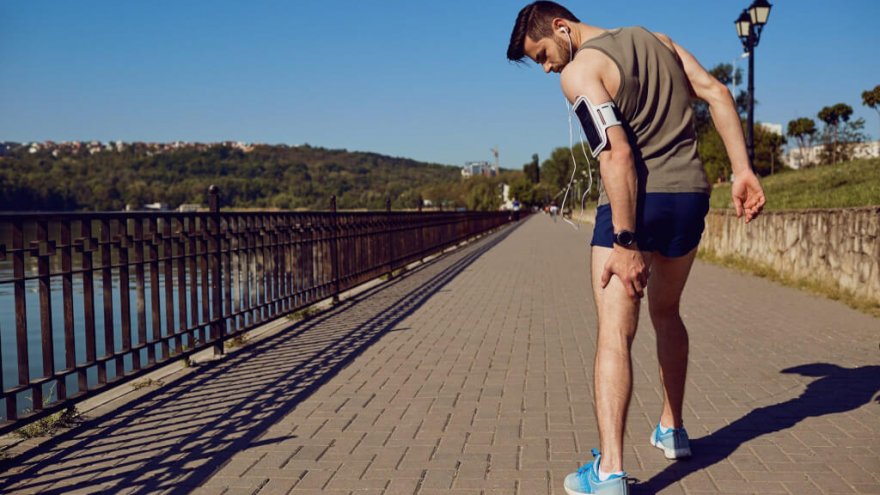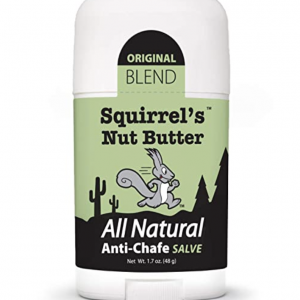How To Prevent Chafing: Common Chafing Areas, Prevention & Treatments

Chafing isn’t a medical-grade emergency, but it can sure feel like one. It often occurs when your skin rubs up against skin or your clothing, especially in the inner thighs, glutes, nipples, and armpits.
Runners don’t often talk about chafing because it isn’t exactly glamorous, but it’s something worth discussing!
Intense chafing is enough to make your daily runs come to a screeching halt, even when you still have ample juice left in the tank.
However, with just a few simple changes you can make those painful burning bumps a thing of the past.
What Is Chafing?
To understand how to fix the problem, we first need to understand why it happens. Those painful bumps on your skin occur when you mix friction from repetitive motion with moisture.
When your skin becomes hot and sweaty and then rubs against itself with every step in your gait cycle, it leads to inflammation. For runners, this often occurs on the thighs, groin, glutes, nipples, and armpits.
Chafing is incredibly common in runners, especially those carrying a bit of extra weight or with a larger muscle mass.
The first signs of chafing start as a hot spot on your skin, and later result in bumpy red rashes similar to blisters if you try and push through the pain.
4 Efficient Ways To Avoid Chafing
The best way to treat chafing is to avoid it entirely!
While many runners feel that chafing is a necessary evil, that simply isn’t the case. With slight tweaks to your clothing and a little preventative care, you’ll never need to cut a run short because it feels like your skin is seconds away from bursting into flames.
Below, I wanted to dive into a few ways to make chafing a thing of the past.
1. No Cotton Clothing!
Skin irritation occurs when you mix equal parts moisture and friction. To eliminate moisture, you need to ditch those cotton running shorts. Sure, they may feel lightweight and comfortable, but cotton loves to hold on to moisture.
As you start to sweat, your cotton clothing hangs on to all of the excess sweat and causes your skin to burn with each and every step.
I suggest investing in running shorts that are made from moisture-wicking material such as nylon or spandex. These fabrics help to wick away moisture to keep your skin cool and dry.
If you’re blessed with strong-large legs, thigh chafing may be an issue you come across. I suggest swapping out running shorts for a pair of compression shorts, running leggings, or shorts that come down to your knees.
2. Underwear is Equally important
When I say ditch the cotton, I mean it. That includes your basic cotton underwear. If you often sweat in your groin area, your underwear is likely to blame. Many running shorts come with underwear built in it, but you can also ditch the underwear altogether!
If you are like me and the thought of going commando makes you a little uneasy, be sure that you wear underwear that is made from moisture-wicking fabrics that keep your undercarriage nice and eliminate excess moisture. There are many brands out there that make specific running underwear that is built to eliminate chafing entirely.
For nipple chafing (which most runners have encountered but none like to talk about!) a proper sports bra that fits snugly against your body is super important.
3. Find the Right Fit
Moisture-wicking shorts and underwear are important, but they also need to fit properly. Good running clothing should fit your body like a second skin. If your clothing moves around on your skin as you run, the friction is likely to cause your skin to become irritated.
Remember, chafing happens when moisture and friction come together, so it’s important to combat both with a solid skin barrier.
4. Skin Treatments
If you are wearing the proper clothing and still feel your skin burning up as you run, you can also apply anti-chafing products to the affected area.
Chafing lubricants such as Squirrel’s Nut Butter are made from all-natural oils that eliminate friction on your skin that causes chafing. It’s a little bit messy, but it’s the perfect solution when you just can’t quite find a solution that works for you.

An alternative that many runners swear by is Body Glide.
Simple baby powder is another great alternative for preventing chafing. Baby powder or talc absorbs moisture to keep your skin nice and dry as you run.
While petroleum-based formulas work best, baby powder works great in a pinch, and it is often much more affordable (and less messy!).
4 Tips When Treating Chaffed Skin
Irritated skin isn’t as serious as a sprained ankle, but it can feel just as painful if left untreated. Skin injuries may seem superficial, but they can evolve into something more serious if left unchecked.
If your skin is incredibly inflamed from running, it’s best to treat the chafed area and give your sensitive skin a bit of a break before getting back out there. The good news is that treating and soothing chaffed skin is incredibly easy.
1. Take a shower
The salt from your skin after a good run will further dry out and irritate the affected area, so it’s important to wash away all excess salt from the skin before starting your healing regimen. Plus, it will help prevent other skin conditions.
2. Apply powder, lotions, or ointment
Once the skin is dry, apply a topical treatment such as anti-chafing creams, corn starch, vaseline, aloe vera, coconut oil, baby powder, or petroleum jelly. Those hot little bumps love moisture, so it’s super important to keep the area as dry as possible as it heals.
3. Take a Break
The old adage ‘no pain no gain’ does not apply when it comes to chafing. Each time you go for a run before your rash has time to heal will just make things worse. Know when it is time to give your body some time to repair.
4. Time for a doctor visit
If your find that your rash is bleeding, swollen, or just incredibly painful, it may be time to go to the doctor or dermatologist. While at-home treatments and rest may help a little, serious chafing may need prescription-grade ointments to heal properly.
It Happens to Everyone!
Chafing is something that all runners have experienced at one time or another and isn’t something that just happens to heavier runners. Many factors can result in these uncomfortable bumps, such as gait cycle, body frame, muscle mass, and clothing.
By making small changes to your clothing and adding a little preventative care, your skin will thank you!
Latest Articles
 Is Running on a Treadmill Easier Than Running Outside?Runners have their own preferences, whether it is treadmill running, running outside on the road, or exploring trails. So...
Is Running on a Treadmill Easier Than Running Outside?Runners have their own preferences, whether it is treadmill running, running outside on the road, or exploring trails. So... Is It OK to Use Trail Running Shoes on the Road?While trail running shoes can be used on roads, especially in situations where a runner encounters mixed terrains or pref...
Is It OK to Use Trail Running Shoes on the Road?While trail running shoes can be used on roads, especially in situations where a runner encounters mixed terrains or pref... How to Fix Sore Quads After Running?Rest, ice, gentle stretching, and over-the-counter pain relievers can help soothe sore quads after running. Also, ensure ...
How to Fix Sore Quads After Running?Rest, ice, gentle stretching, and over-the-counter pain relievers can help soothe sore quads after running. Also, ensure ... 10 Fruits With The Most Electrolytes to Replace Sports DrinksThese fruits are high in electrolytes such as potassium, magnesium, and calcium, essential for hydration, muscle function...
10 Fruits With The Most Electrolytes to Replace Sports DrinksThese fruits are high in electrolytes such as potassium, magnesium, and calcium, essential for hydration, muscle function...

